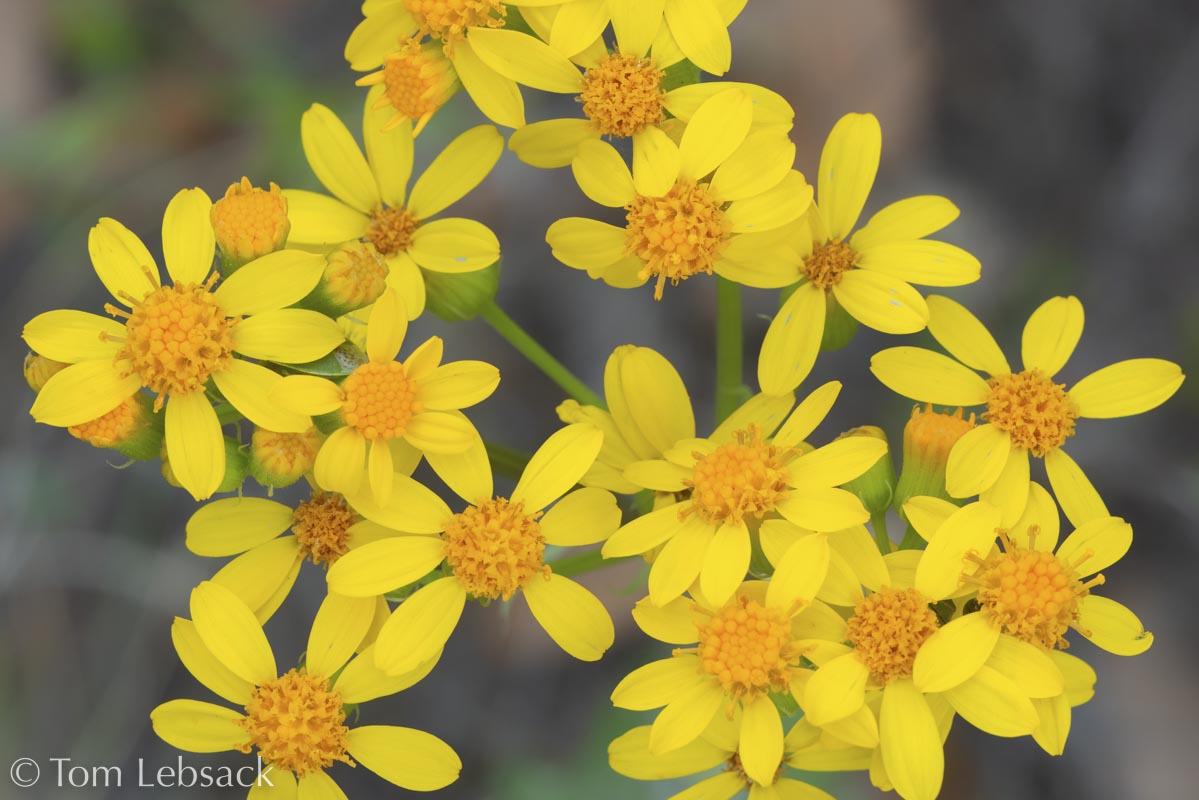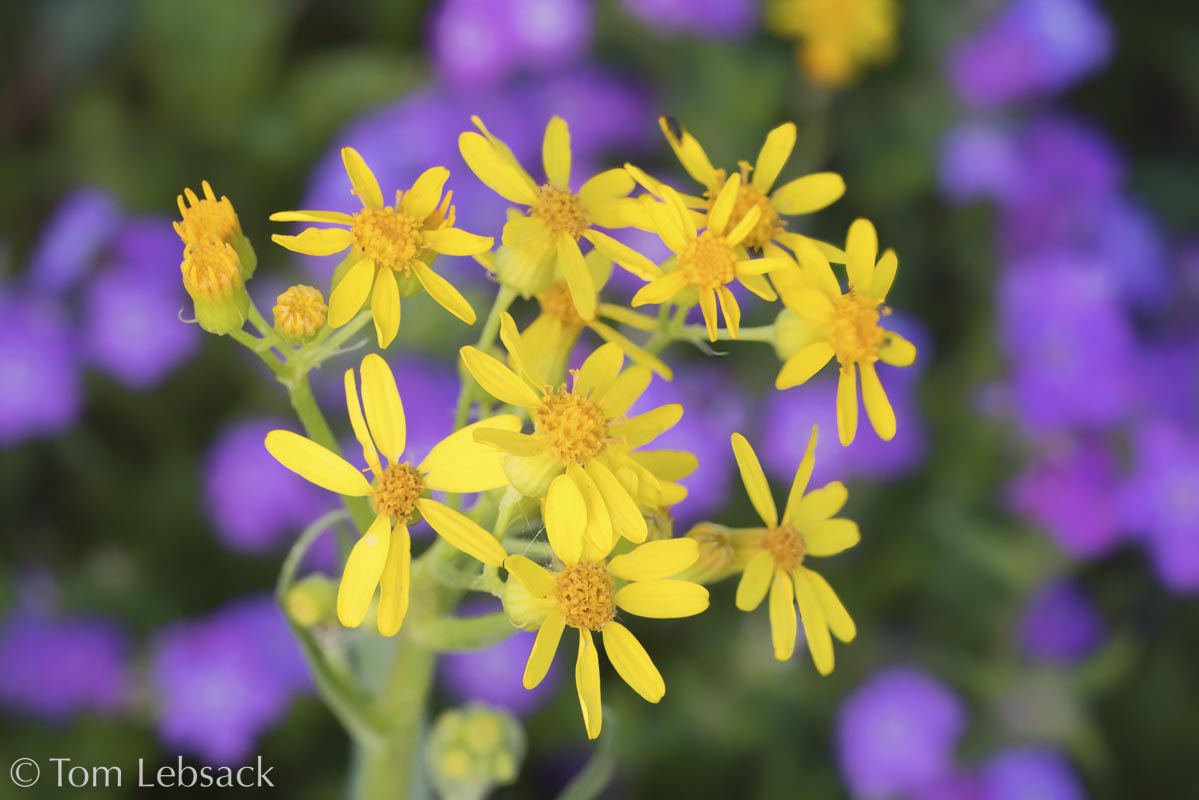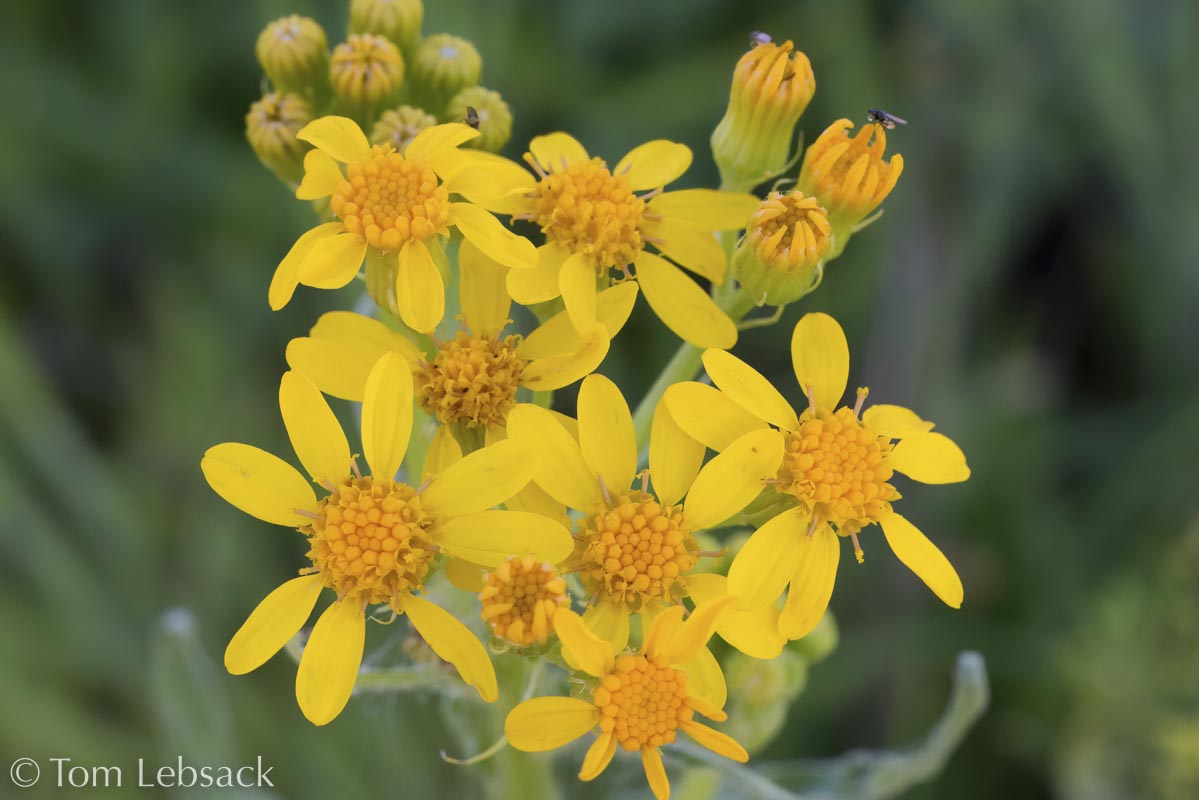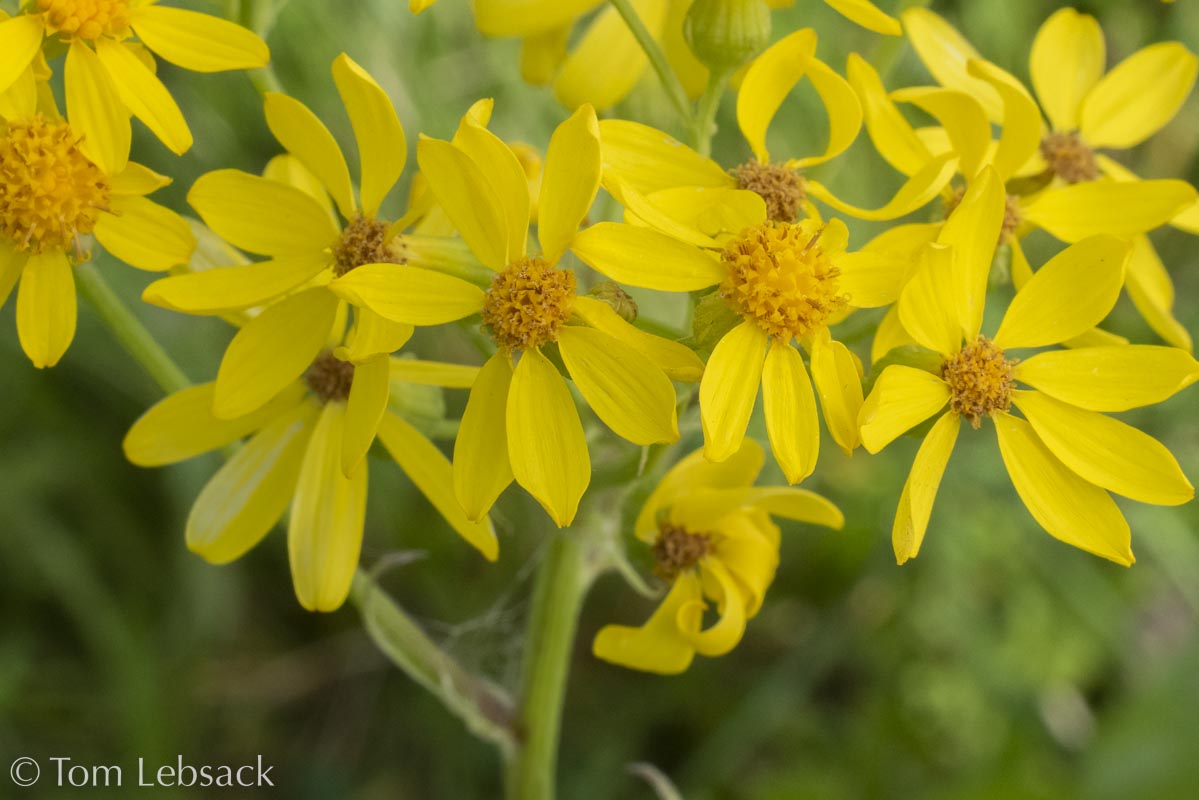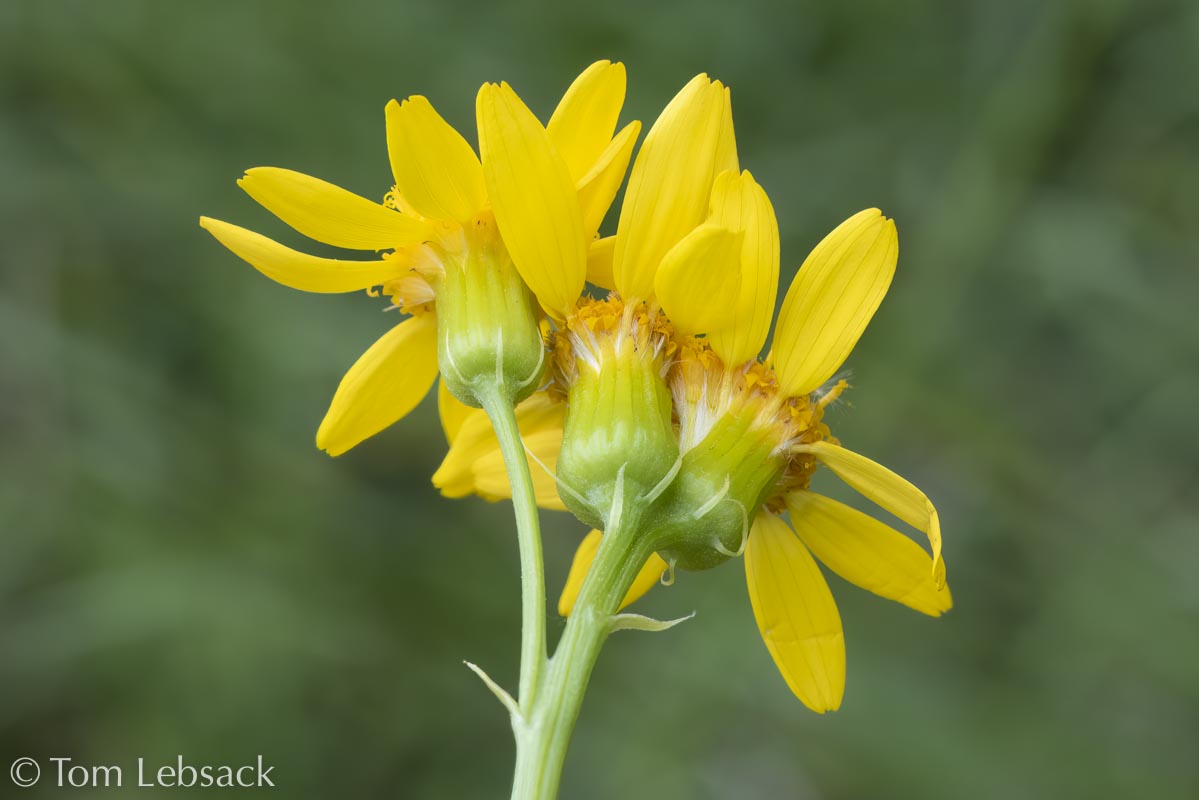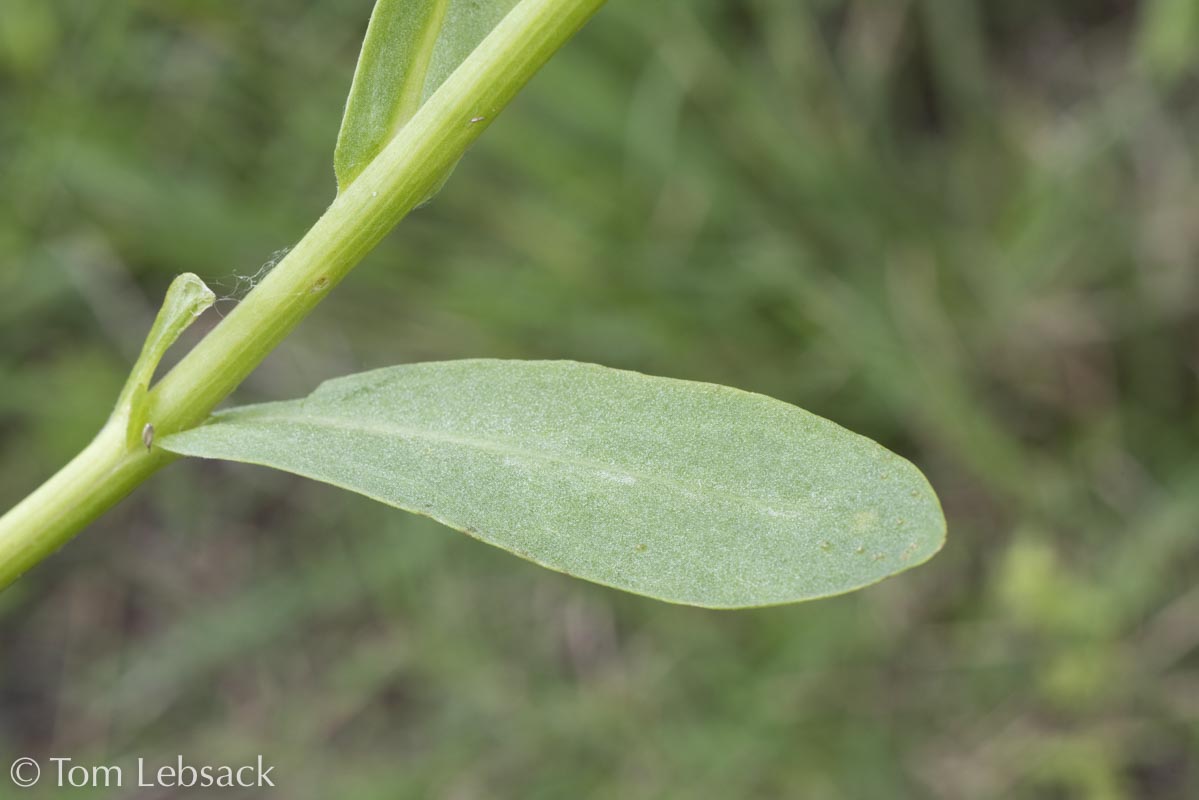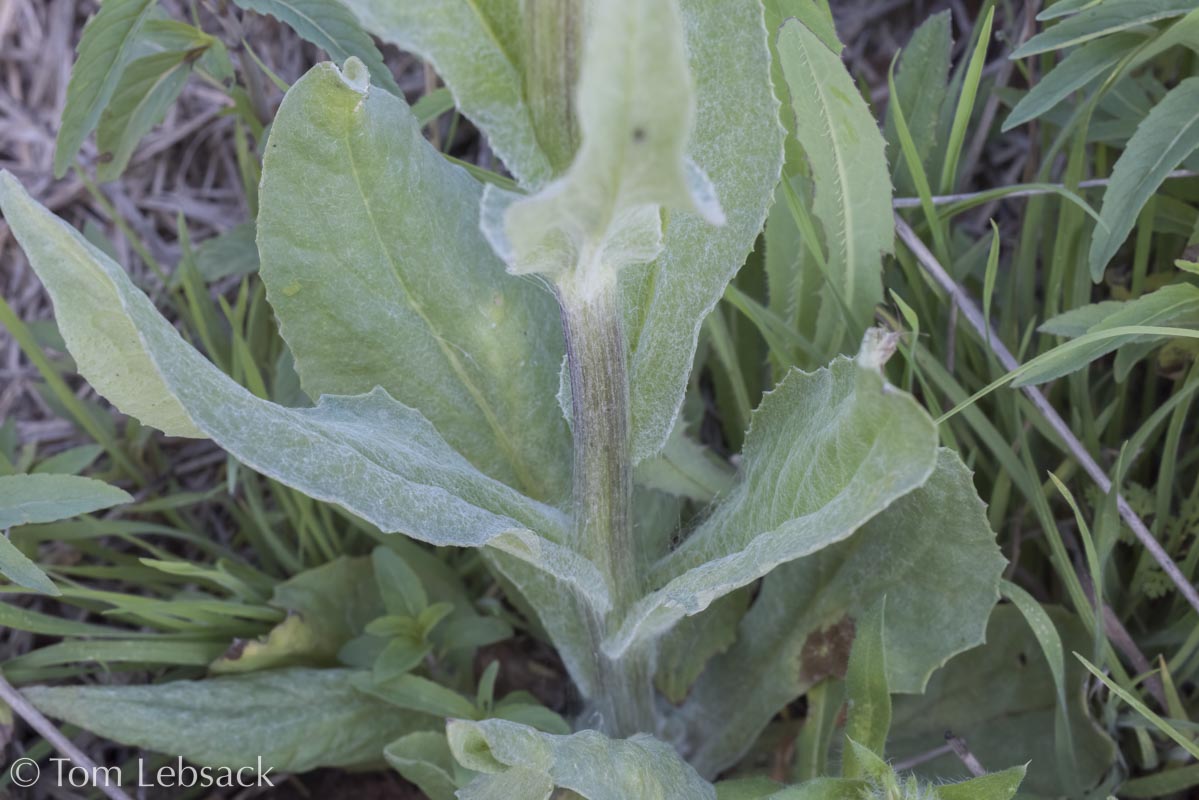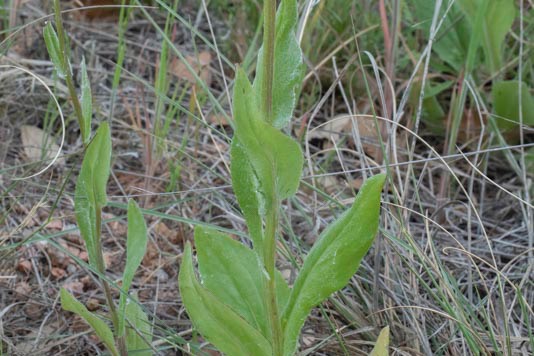Texas Wildbuds
Senecio ampullaceus
(Texas Ragwort)
| Scientific Name | Senecio ampullaceus | USDA PLANTS Symbol | SEAM2 |
| Common Name | Texas Ragwort, Texas Groundsel | ITIS Taxonomic Serial No. | 36094 |
| Family | Asteraceae (Sunflower) | SEINet Reference |
Click Here |
| Description | Habitat: Sandy soils of pastures, abandoned areas, roadsides. Plant: Erect annual 1 to 3 ft. tall, single stem may be branched near top. Leaves: Basal and cauline, lanceolate to oblanceolate, edges may be toothed; not lobed; covered with very fine white hairs; 1 to 6 inches long, becoming smaller and clasping upwards. Inflorescence: Clusters of 10 to 30 yellow composite flowers in corymbiform array, each flower up to 1-1/4 inches across with approx. 8 rays. Bloom Period: February to May. References: "Wildflowers of Texas" by Geyata Ajilvsgi, "Wildflowers of the Texas Hill Country" by Marshall Enquist, and SEINet. |
BONAP Distribution Map Map Color Key Map Color Key |
Texas Status: Native Endemic |
Banner photo of Castilleja indivisa and Lupinus ssp. taken along FM 1323 north of Johnson City, Blanco County
© Tom Lebsack 2025
Every attempt is made to provide accurate, up-to-date, and relevant information, but the completeness or accuracy of any information presented on this website cannot be guaranteed. I use authoritative references to insure high standards of accuracy and review and update the information frequently.
